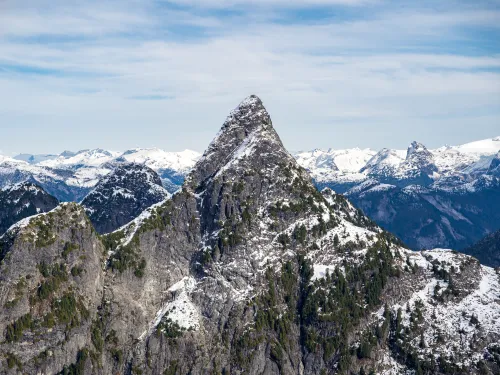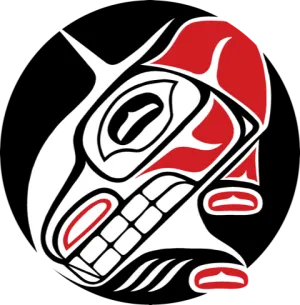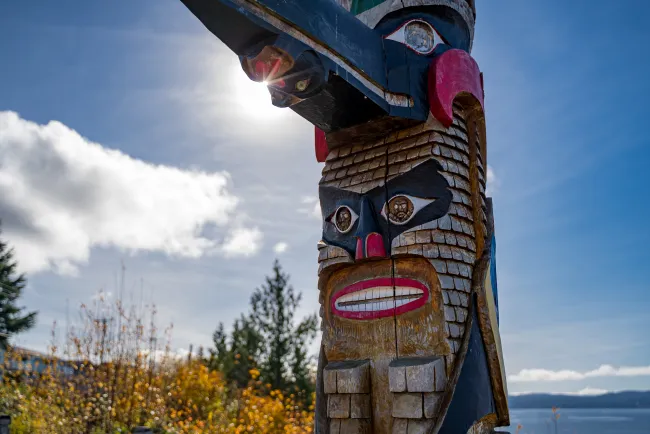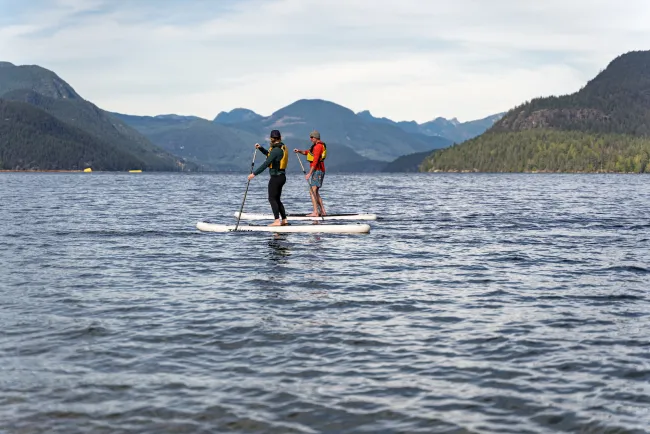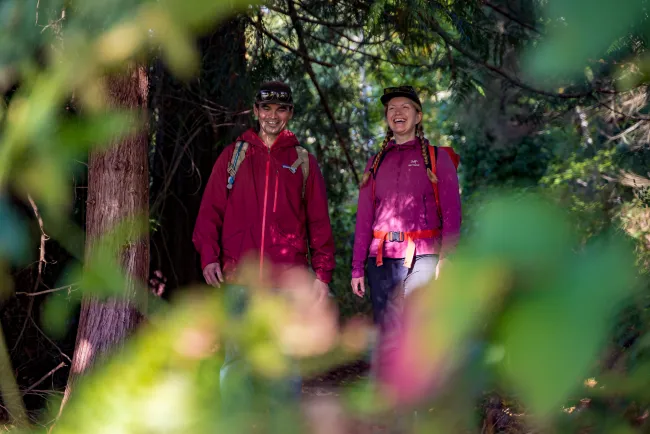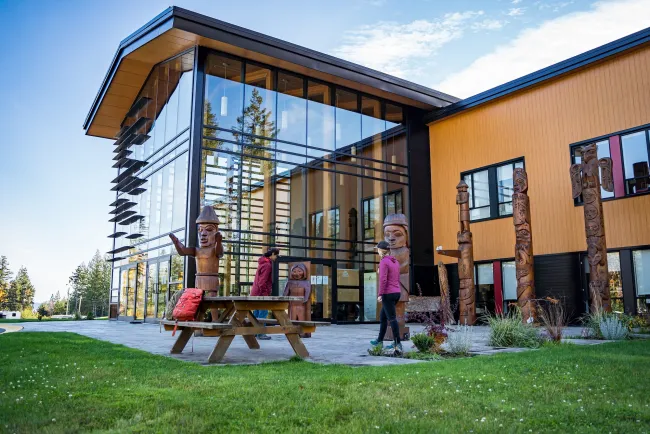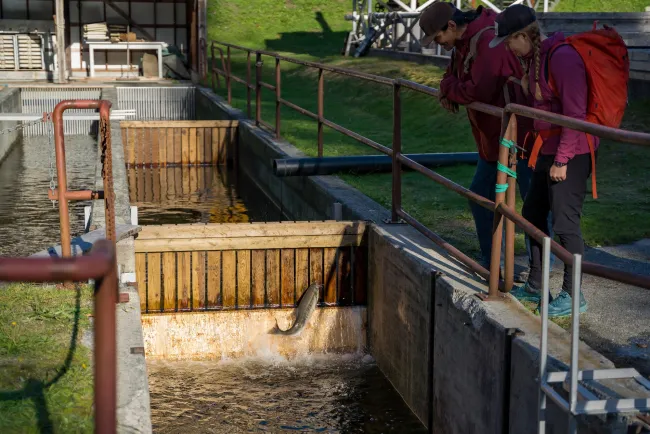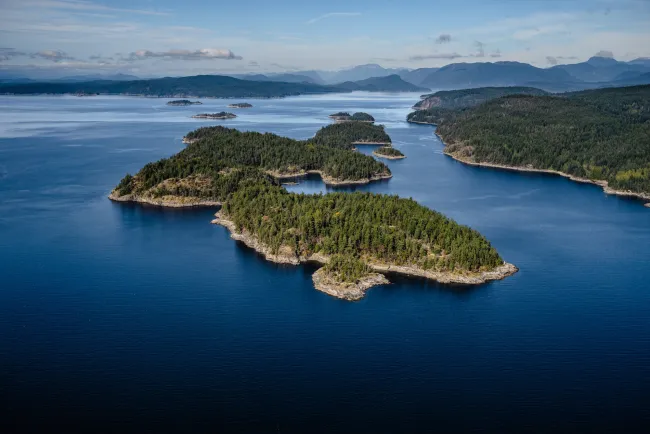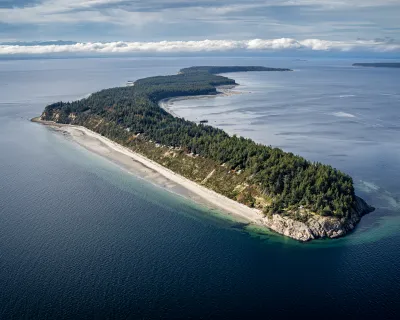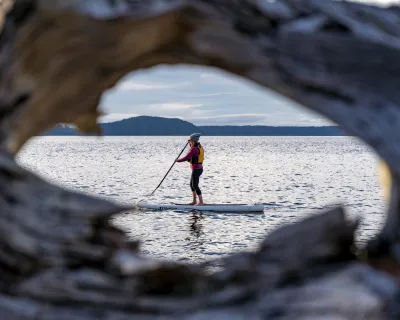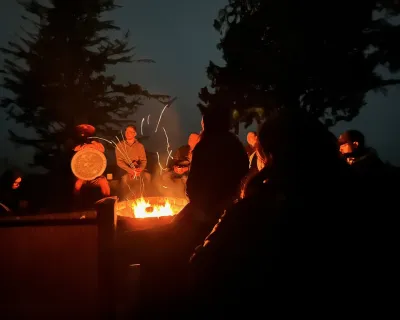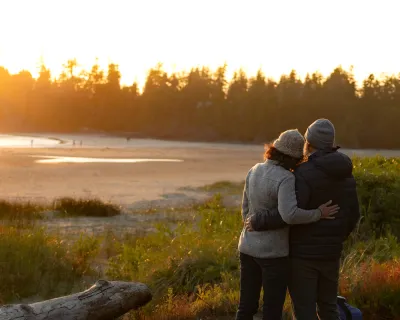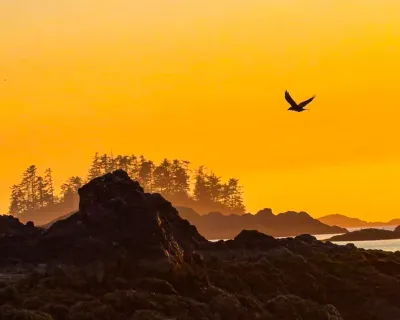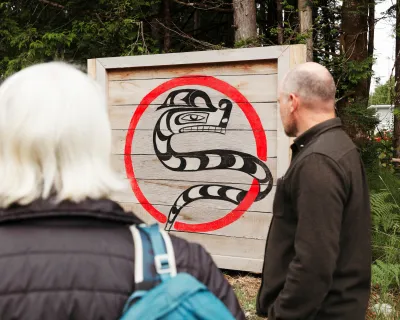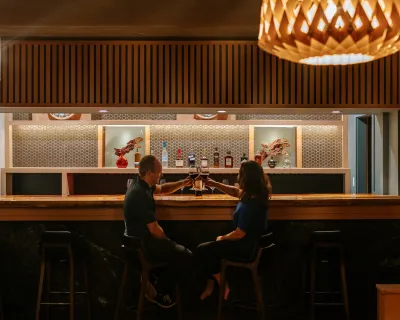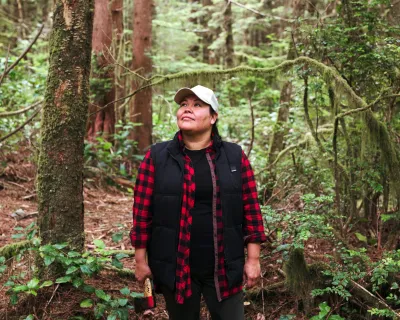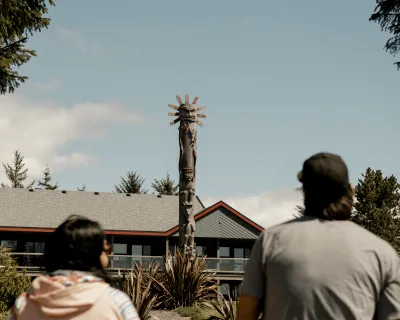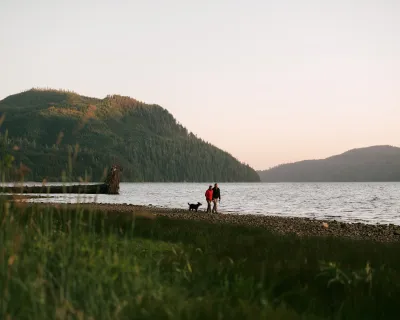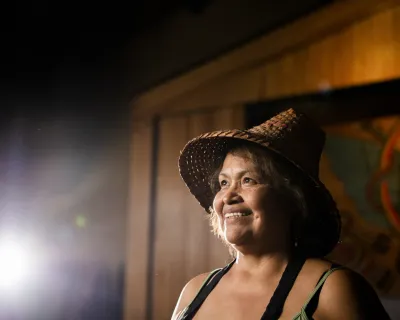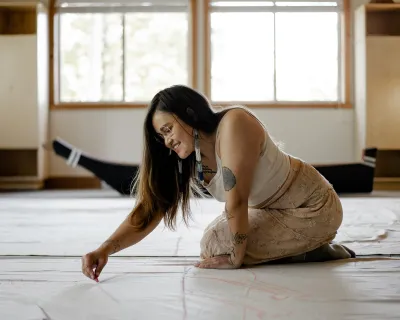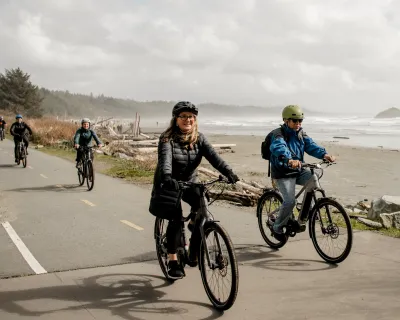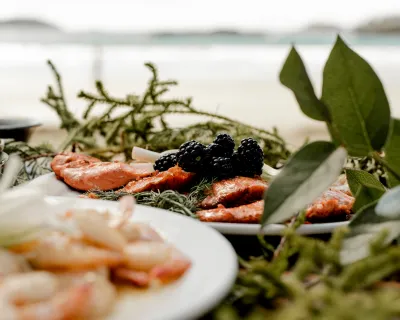Tla'amin Creation Story Comes to Life on the Land
#TLAAMINSTRONG
Discover the deep and abiding Indigenous culture of Tla’amin Nation when you visit their homelands on the Sunshine Coast of BC. Hike, paddleboard and visit cultural sites via the lands and waterways.
Tla'amin Nation, BC - Deep inland on Tla'amin Nation homelands, just outside of Powell River, BC, rises the iconic mountain peak of Beartooth Mountain. Standing out amongst the nearby mountains it quite literally looks like a bear’s tooth. This mountain stands at the centre of the creation story of one of BC’s 198 First Nations. Watch the video and read on to learn the Tla’amin Nation’s flood story and how one mountain saved the Tla’amin people.
The Salish Sea crashes against the shore, rivers and inlets extend inland to the far-reaching forested mountains and large open waters of Powell Lake. Breathing in the deep scent of cedar, you can envision how these three elements - mountains, forests, water - came together in the Tla’amin Flood creation story.
Travelling throughout the diverse landscapes of the west coast of British Columbia I am able to enjoy the calmness that nature brings me as an active outdoor enthusiast. In doing so I have also been increasing my awareness of the stories and culture of the First Nations whose territories I am upon.
Skirting the shoreline of Powell Lake, surrounded by this powerful place, the story comes to life so much more vividly.
Visit Tla'amin and learn through connection to land and culture.
First Nations communities have made that connection to the land and water the basis of their cultures since time immemorial.
With that connection comes the stories that have existed for centuries, handed down from generation to generation. They speak of the geography of the region, the place names and significance of prominent landmarks.
“A long time ago a man had a vision that the world was going to flood. To prepare for this, he made a long cedar rope and tied it to Beartooth Mountain, right in the heart of Tla’amin territory. Sure enough, this flood came, and the man and his family were able to survive. These are some of the ancestors of the Tla’amin people.”
- as told by Drew Blaney, Tla'amin Nation Culture and Heritage Manager
Along with the stories, there are Tla'amin names for landmarks within their traditional territories.
Play this audio clip to hear the pronunciation of the Tla'amin name for Beartooth Mountain.
In Tla’amin culture everything is interconnected with deep connections to the mountains and water which feed the likes of the western red cedar as well as the salmon. Whether I am hiking through the forest, visiting a cultural site or spending time on the water I see first-hand how important nature is to their way of life.
Here are a few ways you can discover the connection for yourself.
Paddle through the Salish waterways
Paddleboarding on Powell Lake or walking across the bridge of the Powell River to the Sunshine Coast trail you are in a place that provided centuries of salmon to sustain the Tla’amin way of life.
Hike in ancient cedar forest on Tla’amin land
Heading up island and into the Tla’amin Nation, take the time to experience the hiking trails connecting you to one of Canada’s most popular, the Sunshine Coast Trail. Here amongst the mighty red cedar trees you see how important a healthy environment is for these mighty giants to grow. For Coast Salish Nations the cedar is the “tree of life,” used to make everything from canoes, totems and shelter to clothing, baskets and tools.
Visit the Totems at Tla’amin Government House
Cedar is connected to every part of the Tla’amin culture and one of the most visual examples is the totem. Totems tell the stories of the past, present and the future and are a way to share creation stories much like the Beartooth Mountain. At the Tla’amin Government House just past Sliamon, stand the new welcome figures. These figures and the new Nation Office behind them represent a new beginning for the Tla’amin Nation as they rebuild sovereignty over the territory and strengthen the culture.
Tour the Tla’amin Fish Hatchery
Tla’amin are known as salmon people, they live on it as a key pillar of their diet. Salmon has always been a sacred species within their circle of life. Within First Nation’ communities there isn’t a line between “the people and the nature,” so salmon makes up who Tla’amin are. By making a stop for a tour of the Tla’amin Fish Hatchery you are invited to learn about this ancient interconnection.
In time before European contact, salmon were plentiful. Places like Powell River as it flowed into the ocean during spawning times or at the headwaters of Theodosia Inlet at the ancient village site of Toquana. Now members of the Tla’amin Tribe carry on the skill of protecting and replenishing the salmon while also keeping it a key food source.
Take a Zodiac Tour to the Salish Sea
At the furthest reaches of the highway NW from Powell River and Tla’amin lies the community of Lund, or “Klah ah men” in their language which means "place of refuge." From the harbour I set out on a zodiac tour to experience the surrounding coast and many islands like the Copeland Island Marine Park. Setting out from this ancient historical village site one could easily see why it was a key destination for travel, trade and hunting amongst the Coast Salish Nations.
It was a place of refuge as the Tla’amin paddled out from Lund to visit Savary Island. Or to paddle through the rich hunting grounds of the Copelands Islands for seals. To paddle around the north tip of the coast into Desolation Sound where other permanent and seasonal village sites stood. Places of historical significance like the village sites at Grace Harbour and Theodosia Inlet, accessed via Okeover Inlet, are breathtakingly beautiful to navigate.
Terracentric Adventures can give you paddling or zodiac access to both Savary Island and the Copelands; be sure to ask them about a stop to view Tla’amin petroglyphs.
Each time I experience this rich, magnificent, geographically diverse region I am left with a deeper gratitude for nature and the benefits it provides me. I am also thankful for the teachings and cultural learning opportunities that coastal Indigenous communities like the Tla’amin Nation generously share by welcoming us onto their lands.
For thousands of years, the Tla’amin have called this place home. Through their connection to the land, they show us a good way forward. One where we are ever mindful of the land and water we recreate on and the stories and history that came before us.
In the words of the Tla'amin Nation: "Ajechepot, Cheh cheh hah thatch ah tuth qwol atems gijeh." (We thank you for travelling to the land of the Tla’amin people.)
About the Author
Chris Istace, aka The Mindful Explorer, is an outdoor adventurer on a path of reconciliation and reconnection. Through his frequent adventures in BC, on the homelands of the Huu-ay-aht, Tla'amin and Ktunaxa Nations, he is cultivating a deeper understanding of Indigenous culture in Canada.
When You GO
- Getting to Powell River is a 1h 30m ferry ride on the Salish Orca Ferry from Comox, or a 30m drive north from the Saltery Bay Ferry terminal, reached from mainland Vancouver via a 40m ferry from Horseshoe Bay.
- Before you arrive, spend some time getting to know the Tla'amin Nation, its culture and COVID policy, in respect for the local culture and safety.
More #TlaaminStrong adventures
Continue your journey of understanding through these stories.
